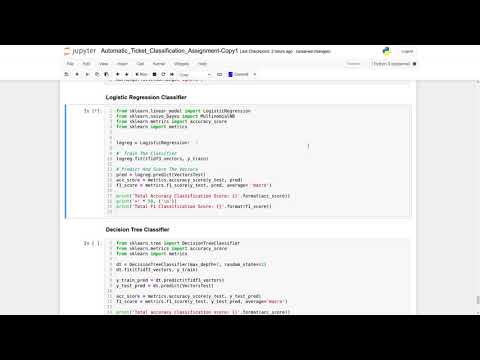Attributeerror Str Object Has No Attribute Decode
An AttributeError is a common type of error that occurs in Python when you try to access an attribute or method that does not exist on an object. It typically occurs when the code is trying to perform an operation on an object that does not support that operation. One specific example of an AttributeError is the “str object has no attribute decode” error.
Understanding str objects in Python
In Python, str objects are used to represent text and are one of the most commonly used data types. A str object is a sequence of Unicode characters and is created by enclosing the text in either single quotes (”) or double quotes (“”). It is important to note that str objects are immutable, meaning they cannot be changed once they are created.
Key characteristics of str objects include:
1. Immutable: Once a str object is created, it cannot be modified. Any operation that appears to modify a str object actually creates a new object.
2. Sequence: A str object can be indexed and sliced, just like other sequence types in Python. For example, you can access individual characters in a str object using square brackets ([]).
3. String Methods: str objects have various built-in methods that allow you to manipulate and perform operations on the text. These methods include split(), join(), upper(), lower(), and many more.
What is the ‘decode’ attribute?
The ‘decode’ attribute, or method, in Python is used to convert a sequence of bytes or a byte-like object into a str object. It is commonly used when working with encoded data, such as when reading data from a file or receiving data over a network. The ‘decode’ method takes an encoding as an argument and returns the decoded str object.
For example, if you have a bytes object representing encoded text in UTF-8 format, you can use the ‘decode’ method to convert it to a str object:
“`
encoded_bytes = b’Some encoded text’
decoded_str = encoded_bytes.decode(‘utf-8’)
“`
In this example, the ‘decode’ method is called on the bytes object ‘encoded_bytes’ with the encoding ‘utf-8’. The result is a str object ‘decoded_str’ containing the decoded text.
Reasons for the AttributeError: str object has no attribute decode
There are several reasons why you may encounter the “AttributeError: str object has no attribute decode” error:
1. Misunderstanding the nature of the ‘decode’ attribute: The ‘decode’ attribute is specific to bytes objects and is not available on str objects. If you attempt to use the ‘decode’ method on a str object, Python will raise an AttributeError.
2. Incorrect usage of the ‘decode’ attribute: Even when working with bytes objects, it is important to use the ‘decode’ method correctly. You need to specify the correct encoding as an argument to the method. Using an incorrect encoding can also result in an AttributeError.
3. Compatibility issues with different Python versions: The ‘decode’ attribute is available in Python 2.x, but in Python 3.x, str objects are already decoded by default. Therefore, attempting to use the ‘decode’ attribute on a str object in Python 3.x will result in an AttributeError.
Troubleshooting the error
If you encounter the “AttributeError: str object has no attribute decode” error, here are some steps you can take to troubleshoot and resolve the issue:
1. Analyze the traceback and error message: The error message will typically provide information about the line of code where the AttributeError occurred. By analyzing the traceback, you can identify the specific line of code causing the issue.
2. Verify that the object in question is indeed a str object: Check the type of the object to ensure that it is a str object. You can use the type() function to determine the type of an object. If the object is not a str object, then attempting to use the ‘decode’ attribute is incorrect and will result in an AttributeError.
3. Check for typographical errors in code: Make sure that the attribute name is spelled correctly and that there are no typos in the code. Even a minor typo can result in an AttributeError.
Correct usage and alternatives to ‘decode’
To avoid the “AttributeError: str object has no attribute decode” error, it is important to use the ‘decode’ method appropriately and only on bytes or byte-like objects. Here is the correct usage of the ‘decode’ method:
“`
encoded_bytes = b’Some encoded text’
decoded_str = encoded_bytes.decode(‘utf-8’)
“`
If you are working with a str object in Python 3.x, which is already decoded by default, you can directly use the str object without the need for the ‘decode’ method.
Alternative methods for decoding in Python include the ‘encode’ method, which is used to convert a str object to bytes, and the ‘codecs’ module, which provides additional options for encoding and decoding.
Best practices to avoid the ‘decode’ AttributeError
To prevent encountering the “AttributeError: str object has no attribute decode” error, it is recommended to follow these best practices:
1. Code review and testing: Always review your code carefully and test it thoroughly before running it in a production environment. This will help identify any potential issues, such as incorrect usage of attributes or methods, before they cause errors.
2. Thoroughly understand str objects and their attributes: Familiarize yourself with the characteristics and methods of str objects in Python. This will help you avoid mistakes and select the appropriate methods for manipulating and working with text data.
Conclusion
In conclusion, the “AttributeError: str object has no attribute decode” error occurs when trying to use the ‘decode’ attribute on a str object in Python. This error can be caused by misunderstanding the nature of the ‘decode’ attribute, incorrect usage of the attribute, or compatibility issues with different Python versions. Troubleshooting steps include analyzing the traceback, verifying the object type, and checking for typographical errors. It is important to use the ‘decode’ method appropriately and consider alternative methods for decoding in Python. Following best practices, such as code review and thorough understanding of str objects, can help avoid this AttributeError.
Attributeerror: ‘Str’ Object Has No Attribute ‘Decode’ In Logistic Regression Algorithm
Keywords searched by users: attributeerror str object has no attribute decode A bytes-like object is required, not ‘str, Base64 decode Python, Str encode decode, Decode trong Python, Decode hex Python, String decode, Str decode Python 3, Convert string to unicode
Categories: Top 62 Attributeerror Str Object Has No Attribute Decode
See more here: nhanvietluanvan.com
A Bytes-Like Object Is Required, Not ‘Str
When working with different data types in Python, it is essential to ensure that the correct type is used for a specific task. One common source of confusion is the difference between the ‘bytes’ and ‘str’ data types. Understanding this difference is crucial, as it can prevent unexpected errors and ensure the smooth execution of your code.
In Python, the ‘bytes’ data type represents a sequence of bytes, while ‘str’ represents a sequence of Unicode characters. The main distinction is that ‘bytes’ is a raw, binary data type, while ‘str’ is a higher-level text data type. This means that ‘bytes’ can contain any binary data, including encoded text, such as UTF-8 or ASCII. On the other hand, ‘str’ represents text that can be encoded into bytes.
When a ‘bytes-like’ object is specifically required, it means that a function or method expects a parameter of type ‘bytes’ or an object that behaves like ‘bytes’. This requirement is necessary for operations that deal with binary data or operations that rely on low-level manipulation.
Why is using a bytes-like object important?
1. Compatibility with binary data: Many operations, such as file handling, network communication, and cryptographic operations, require binary data. By using a bytes-like object, you ensure compatibility with these operations, which helps prevent errors and data corruption.
2. Performance improvement: Manipulating binary data directly with ‘bytes’ is generally faster than working with Unicode strings. This is because ‘bytes’ data is stored more efficiently in memory and can be processed more efficiently by low-level functions.
3. Integration with external libraries: Some libraries and APIs expect data in a binary format. By providing a bytes-like object, you ensure seamless integration with these external components, avoiding potential compatibility issues.
Frequently Asked Questions (FAQs):
Q1. What does ‘bytes-like object is required’ mean?
A1. When a function or method requires a ‘bytes-like object’, it means that it expects a parameter of type ‘bytes’ or an object that behaves like ‘bytes’. Passing a string (‘str’ object) instead of a ‘bytes’ object can result in a TypeError.
Q2. How can I convert a string to a bytes-like object?
A2. To convert a string to a ‘bytes-like object’, you can use the ‘encode’ method available on ‘str’ objects. For example, if your string variable is called ‘my_string’, you can convert it to bytes by calling ‘my_string.encode()’.
Q3. Are ‘bytes’ and ‘str’ interchangeable?
A3. No, they are not interchangeable. While there are some similarities between ‘bytes’ and ‘str’, they represent different data types and have different use cases. ‘bytes’ is used for binary data, while ‘str’ is used for text data.
Q4. Is it possible to convert a ‘bytes’ object to a string?
A4. Yes, you can convert a ‘bytes’ object to a string by using the ‘decode’ method available on ‘bytes’ objects. For example, if your bytes variable is called ‘my_bytes’, you can convert it to a string by calling ‘my_bytes.decode()’.
Q5. Can I perform string operations on a ‘bytes’ object?
A5. No, you cannot perform string operations directly on ‘bytes’ objects. While the ‘bytes’ type has similarities to ‘str’, it lacks many of the string-specific methods, such as ‘split’ or ‘replace’. If you need to perform string operations on binary data, you must first convert it to a string using the ‘decode’ method.
In summary, understanding the distinction between a ‘bytes-like object’ and a ‘str’ object is crucial for writing effective Python code. By ensuring that the correct data type is used in operations involving binary data, you can avoid compatibility issues, improve performance, and integrate smoothly with external libraries. Remember to convert between ‘bytes’ and ‘str’ types when necessary, using the ‘encode’ and ‘decode’ methods respectively.
Base64 Decode Python
Understanding Base64 Encoding:
Before diving into Base64 decoding, it is crucial to grasp the concept of Base64 encoding. Encoding refers to the process of converting data from its original format to a different format suitable for transmission or storage purposes. Base64 is a type of encoding that transforms binary data into a human-readable ASCII string format. Each character in the Base64 encoded string represents six bits of the original binary data.
The Base64 Encoding Process:
When encoding data in Base64, it is divided into 24-bit chunks. Each 24-bit chunk is then split into four 6-bit sections. These 6-bit sections are converted into decimal values, which correspond to printable ASCII characters based on an index table. These characters are finally concatenated to form the Base64 encoded string.
Base64 Decoding in Python:
Python provides a straightforward way to decode Base64 strings through the ‘base64’ module. This module offers a variety of functions to handle Base64 encoding and decoding operations. The ‘base64’ module includes functions like ‘b64encode()’ and ‘b64decode()’, where ‘b64encode()’ is used to encode data, whereas ‘b64decode()’ is used for decoding Base64 strings.
To decode a Base64 string in Python, you can use the ‘b64decode()’ function, which takes the encoded string as an argument and returns the decoded binary data. Here is an example that illustrates the Base64 decoding process:
“` python
import base64
encoded_string = ‘SGVsbG8gV29ybGQ=’
decoded_data = base64.b64decode(encoded_string)
print(decoded_data)
“`
In this example, a Base64 encoded string ‘SGVsbG8gV29ybGQ=’ is provided as input. The ‘b64decode()’ function decodes the encoded string, and the resulting binary data is stored in the ‘decoded_data’ variable. Finally, the decoded data is printed, which in this case would be the string ‘Hello World.’
Frequently Asked Questions:
Q: What is the purpose of Base64 encoding and decoding?
Base64 encoding is primarily used to represent binary data in a format suitable for transmission via text-based protocols like email or HTTP. Encoded strings can be easily transmitted or stored without worrying about character corruption. Base64 decoding, on the other hand, is utilized to retrieve the original binary data from its encoded form.
Q: Can I decode non-Base64 strings using the ‘b64decode()’ function in Python?
The ‘b64decode()’ function in Python expects a valid Base64 encoded string as input. Providing a non-Base64 string will result in a ‘TypeError’ since the input does not adhere to the defined Base64 encoding scheme. Therefore, ensure that the input passed to ‘b64decode()’ is a valid Base64 encoded string.
Q: What happens if the provided Base64 encoded string is incorrect or corrupted?
If the provided Base64 encoded string is incorrect or corrupted, attempting to decode it will generate a ‘binascii.Error’ exception with a message stating that the input contains incorrect padding. Padding refers to the extra characters added to the end of the encoded string to ensure it has a multiple of four characters.
Q: Can I convert the decoded binary data back to its original data type?
Yes, it is possible to convert the decoded binary data back to its original data type using appropriate methods. For instance, if the original data was a UTF-8 encoded string, you can use the ‘decode()’ method to convert the binary data to a string: `decoded_data.decode(‘utf-8’)`.
In conclusion, Base64 decoding is a fundamental operation used in various applications to retrieve binary data from its human-readable ASCII representation. With Python’s built-in ‘base64’ module, decoding Base64 encoded strings is relatively straightforward. By utilizing the ‘b64decode()’ function, you can effortlessly decode encoded strings and retrieve their original binary data. It is essential to understand the purpose, encoding process, and available functions in the ‘base64’ module to effectively work with Base64 decoding in Python.
Images related to the topic attributeerror str object has no attribute decode

Found 23 images related to attributeerror str object has no attribute decode theme
































![Solved] Module 'pkginfo.distribution' has no attribute 'must_decode' Solved] Module 'Pkginfo.Distribution' Has No Attribute 'Must_Decode'](https://itsourcecode.com/wp-content/uploads/2023/03/Attributeerror-Module-pkginfo.distribution-has-no-attribute-must_decode.png)











Article link: attributeerror str object has no attribute decode.
Learn more about the topic attributeerror str object has no attribute decode.
- ‘str’ object has no attribute ‘decode’. Python 3 error? [duplicate]
- AttributeError: ‘str’ object has no attribute ‘decode’ – bobbyhadz
- Attributeerror: ‘str’ object has no attribute ‘decode’ ( Solved )
- AttributeError: ‘str’ object has no attribute ‘decode’ (Fixed)
- Solve the attributeerror str object has no attribute decode error
- ‘Str’ Object Has No Attribute ‘Decode’ Solved: Python 3
- Fix Python AttributeError: ‘str’ object has no attribute ‘decode’
- How to Fix AttributeError: ‘str’ object has no attribute ‘decode’